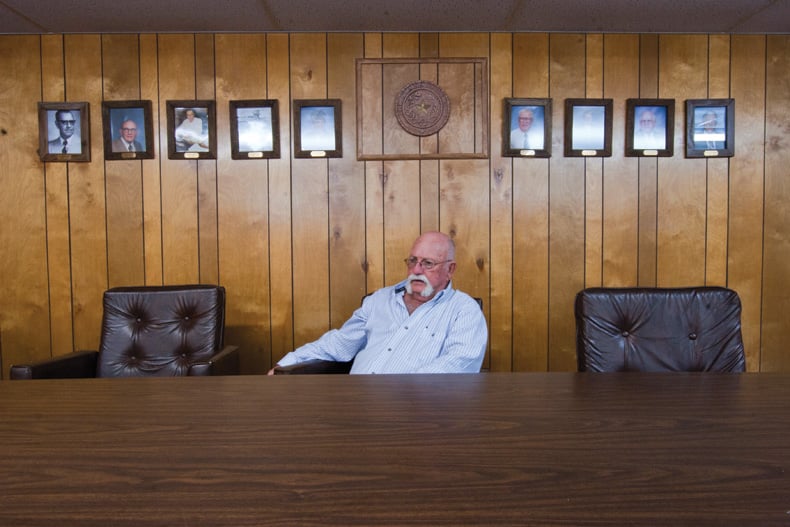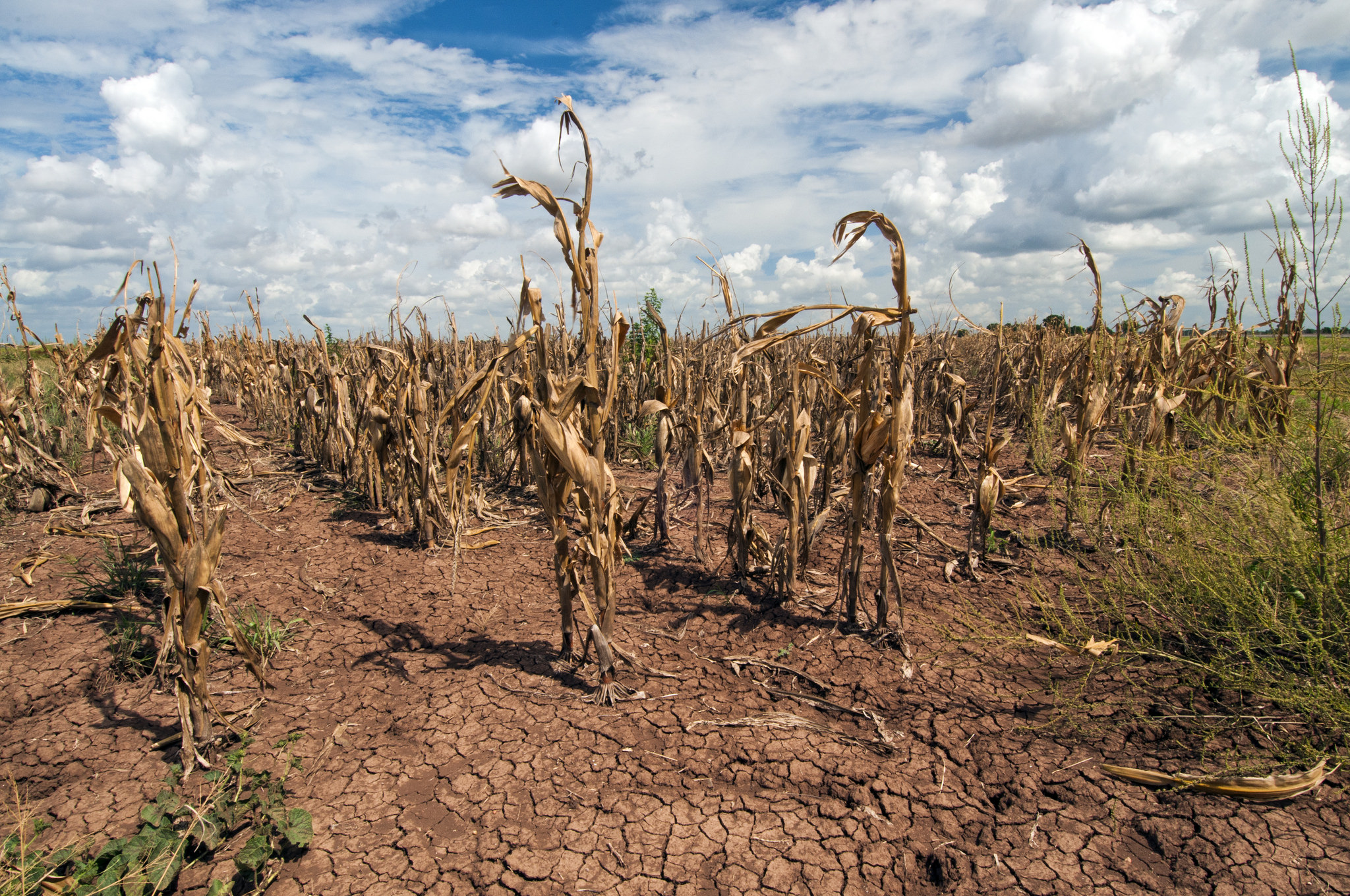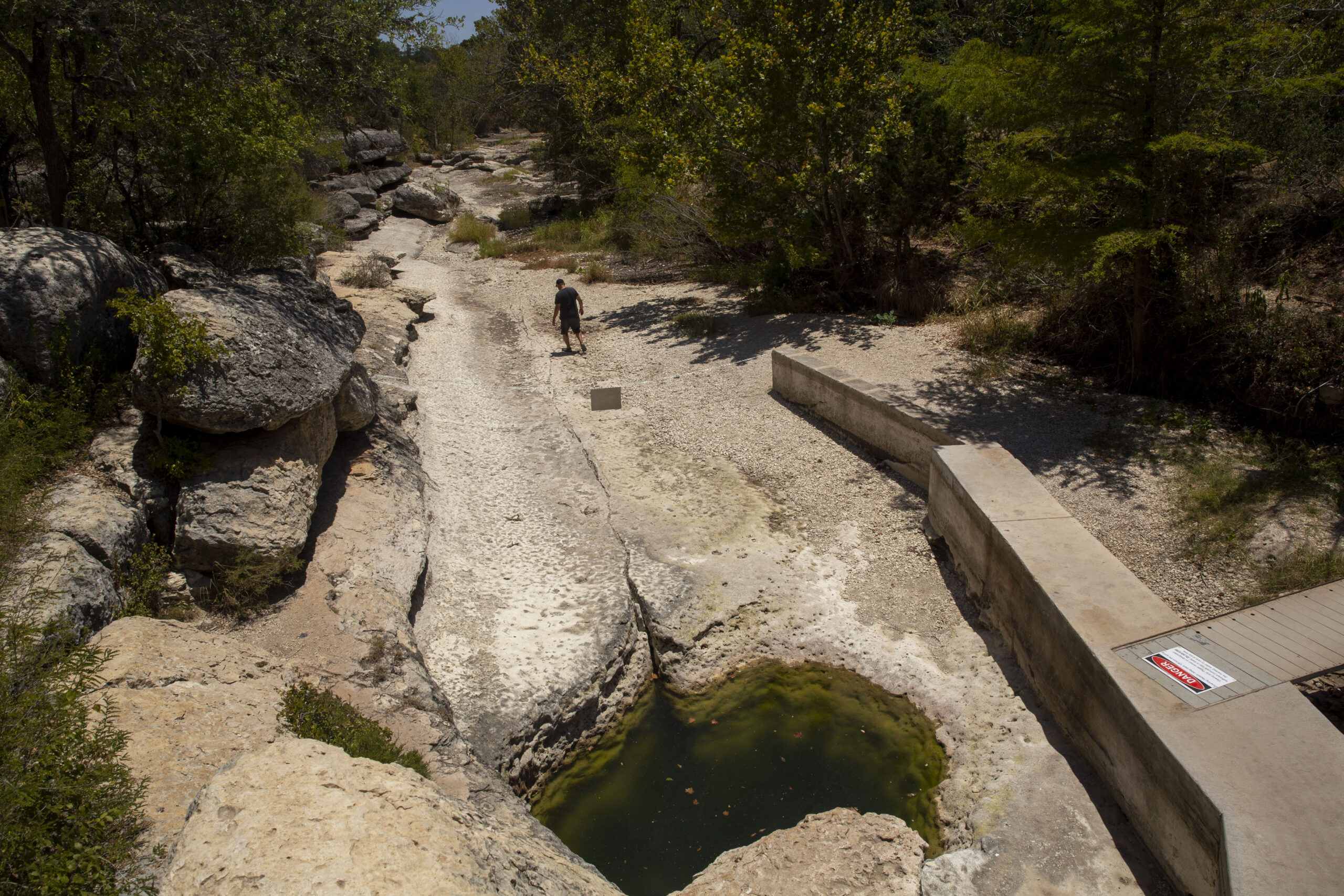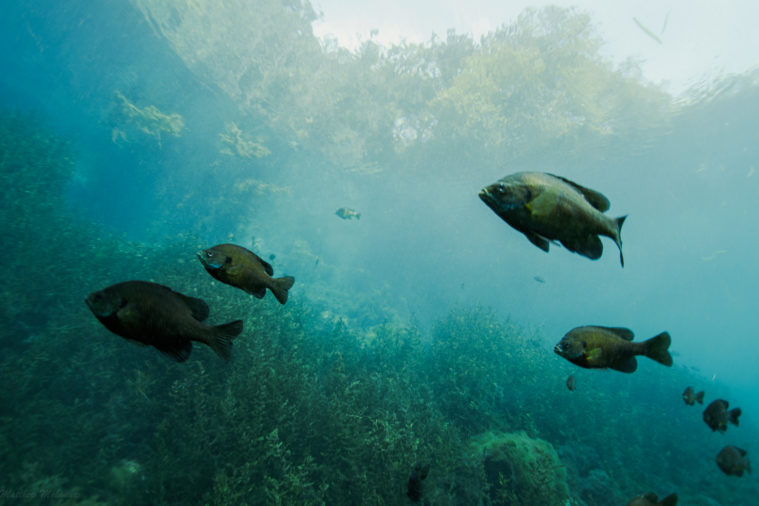Hot, Dry, Endless…
As the countryside burns, cities search for water and cattle starve, Texas endures one of its worst droughts.
In early 2007, the commissioned a story on what then seemed a horrific drought. You may have forgotten the drought that crept into the corners of the state in mid-2005 and lingered for 18 months. Agricultural losses topped $4 billion, water supplies plummeted and “pray for rain” signs sprouted in the parched countryside.
Our story, by photographer Steve Satterwhite and writer Richard Whittaker, featured the voices and images of farmers and ranchers wrung dry by the lack of rainfall. As Texas baked, we prepared a headline for the cover of that issue: “Oh, Lord, when will it rain?” A good question, and one that was answered when someone upstairs turned on the spigot as we neared deadline. Just our luck. The rain fell and fell. So back to the drawing board we went for a more appropriate headline.
Like everyone else gazing longingly skyward these days, we hope it will rain. If this story does the trick, well, so be it. But it doesn’t look likely. State climatologist John Nielsen-Gammon is warning that this latest drought, just a year old, is likely to extend well into 2012, and perhaps beyond.
The state has never seen weather conditions like this. Nielsen-Gammon has calculated that Texas’ summer of 2011 was the hottest, driest summer since record-keeping began in 1895. “It’s been extremely unusual,” he said. Records—for heat, precipitation, streamflow and groundwater levels—have fallen almost daily.
Wildfires have scorched the pine curtain of East Texas, ravaged the farms and ranches of West Texas, and destroyed more than 1,400 homes among the loblolly pine forests of Bastrop. Soon, if the drought persists, the state’s water supplies will reach unprecedented lows. In Austin, the Barton Springs salamander faces possible extinction as oxygen levels plunge in the Barton Springs pool. Residents of small towns like Robert Lee and Llano and of mid-size cities such as Midland and San Angelo are scrambling to find new water supplies. Farmers and ranchers have suffered $5 billion in losses.
Drought is a sculptor. It draws lines on the blistering ground of receding reservoirs and the faces of farmers alike. No one is spared, but not all are touched equally. Those in rural parts of Texas, especially those who work the land, are suffering the most. Some communities have implemented painful water rationing and made permanent changes to the way they use the resource. Meanwhile, others continue with business as usual, farming grass at their suburban homes with reckless abandon.
In this photo essay, we try to make sense of drought, once and future, and the incredible power it has over the land, the people and the economy.
Vanishing lakes

O.C. Fisher Reservoir once sprawled across 5,440 acres and contained 39 billion gallons of water. The reservoir—perched on the outskirts of San Angelo on the North Concho River—is now a desiccated husk of its former self, its edges choked by invasive salt cedar and littered with the corpses of bass and catfish.
The U.S. Army Corps of Engineers started building Fisher in 1947, the first year of a 10-year drought that still stands as the worst in Texas history, and the beginning of a muscular era of dam building in Texas. By 1958, when the rains returned, Fisher filled up—for the first and last time.

Still, for decades, Fisher provided a secondary supply of drinking water to San Angelo and served as a popular fishing and recreation destination for West Texans. But droughts, including the present one, have laid waste to the reservoir. In 2008, Fisher effectively dried up. The few patches of water that remain are being drained of life. In January, low oxygen levels and an algae bloom spawned a massive fish kill, with trophy-sized bass floating belly-up. This summer, after months of brutal heat and sky-high evaporation rates, a bacteria that thrives in low-oxygen conditions took hold, turning Fisher blood red. Some End Times enthusiasts interpreted the phenomenon as a sign of the apocalypse. In reality, San Angelo and other West Texas cities are facing a more concrete dilemma. They’re running out of water. Two of the three reservoirs San Angelo depends on are now effectively dry. The third, O.H. Ivie, is at less than 21 percent capacity. At current rates, San Angelo could run out of water by the end of 2012 if new supplies aren’t secured.
A Pretty Hard Go

Bill Tullos, 88, has lived through more drought years than he cares to remember. There was the Dust Bowl of the 1930s. The devastating 10-year stretch spanning the late ’40s and ’50s. And now this: the Great Drought of 2011 and, probably, 2012. Except for four years in the Army Air Corps during World War II, Tullos has been a cattle, sheep and goat rancher on 5,000-plus acres southwest of San Angelo. The current lack of rainfall, just 5 inches for the year, has taken a toll on the land. Weak spring rains meant little forage growth. The Middle Concho River, which Tullos uses to water his livestock, is nearly dry. Half his pecan trees are dead or dying. Some of his stock tanks dried up for the first time since they were built in the ’60s. Wildfires recently scorched more than 10,000 acres in Irion County, but spared Tullos’ land.

In April, Tullos started selling off his livestock bit by bit: 900 sheep, 500 goats and 80 to 90 head of cattle. With hay prices high and an aversion to overgrazing, Tullos had no choice.
Now he’s down to about 300 Angora goats he keeps at a loss. “The last of those cows took a little bit of my heart with them,” Tullos said.
But experience with previous droughts has given him some hard-earned perspective. “It’s a pretty hard go but that’s just the way life is. I keep telling myself the good Lord won’t let me die in the middle of a drought, so maybe it will get back green.”

Tullos is more concerned about the long-term viability of farming and ranching. Texas farmers and ranchers have suffered $5 billion in losses over the past year due to failed crops and decimated livestock. Marginal operations are folding. Tullos’ neighbors are no longer ranchers. They’re wealthy people from the city who use the land for recreation.
Brown vs. green

In the city that oil built, water is becoming more precious than crude. So far in 2011, Midland has received just over two inches of rain. (In an average year, Midland would have seen 11 inches of rain by now). Almost all of Midland’s water comes from three reservoirs owned by the Colorado River Municipal Water District. Two of those reservoirs, J.B. Thomas and E.V. Spence, are effectively dry. The third, O.H. Ivie, is dropping by 3,000 acre-feet per week and is projected to be empty by the end of 2012. With dire drought conditions expected to continue at least through the winter, city officials are scrambling to build a $140 million pipeline to tap groundwater west of Odessa, but the project isn’t scheduled for completion until the end of 2012. This summer, the water district ordered Midland to cut back its water use by 20 percent. When voluntary measures failed, the city imposed mandatory restrictions for the first time ever.
The new rules are similar to those in other West Texas cities—and far less stringent than those in El Paso or San Antonio—but Midland, with its “drill, baby, drill” ethos, is struggling to adapt. Despite the conservation mandate, Midlanders have blown the usage cap on 48 days this summer. This is the desert, yet grass-farming is in vogue. Acres of St. Augustine hug mansions in tony neighborhoods. On a recent summer afternoon we found several home irrigation systems watering the pavement in the middle of the day, when outdoor watering is banned. In one gated community, where former Republican House Speaker Tom Craddick owns a 10,000-square-foot mansion, a watery canal separates homes as if Venice had come to the Permian Basin. In middle-class and poor areas, the picture is more mixed, with crispy lawns side by side with lush greenery.
Playground of West Texas

The West Texas town of Robert Lee (population 1,171) has made national news for its dire water problems. The town’s sole source of water, the once-vast E.V. Spence Reservoir, is below one half of one percent capacity—and dropping daily. Strict water conservation measures are in place, but if no rain comes Robert Lee could be bone-dry as soon as January. Mayor John Jacobs, a lifetime resident of Robert Lee who grew up on a ranch with a windmill-drawn well, says he’s trying to find funding for a $1.5 million pipeline to the relatively water-rich town of Bronte, 12 miles away. If the project fails, the town may be forced to truck water in, Jacobs says.

The drying of E.V. Spence has taken an economic and psychological toll on a town that once billed itself The Playground of the West. “Back when you had water you couldn’t stir the boaters and campers with a stick,” Jacobs says. Now, the canyon that once held Spence’s water is eerily silent, overlooked by abandoned homes and empty picnic tables, and grazed by cattle.

Such a sight would have been unimaginable when the lake was built in 1969. “They never thought we’d have to worry about water again,” says Jacobs. “Why, we’ve got one of the largest lakes in
West Texas.”
The area, of course, is no stranger to drought, a phenomenon that West Texans tend to view with
determined stoicism.
“We’re one rain away from being all right,” Jacobs says. “It’s just a matter of it being in the right place at the right time.”


